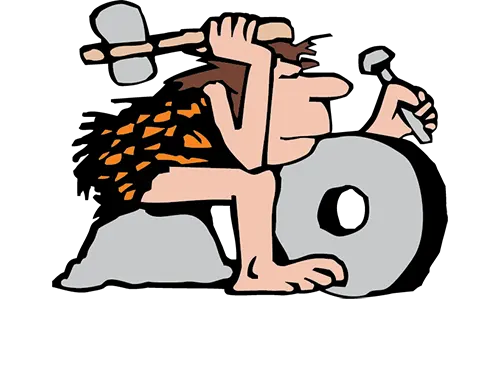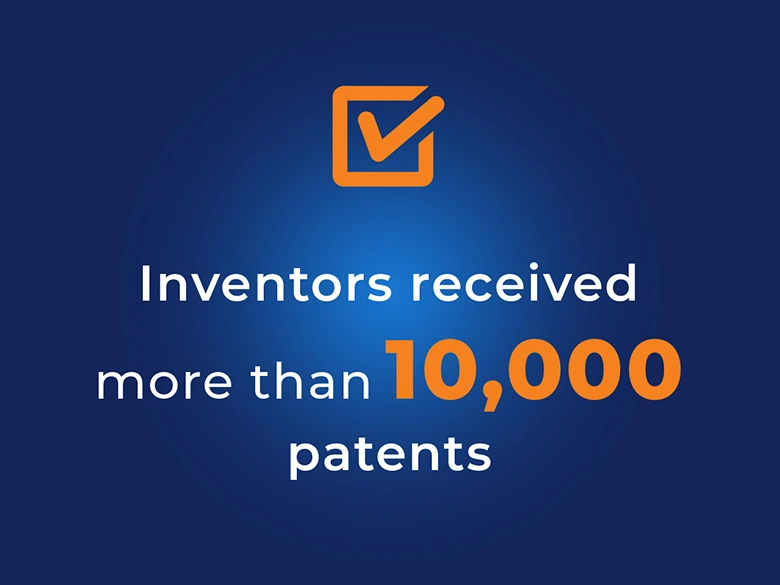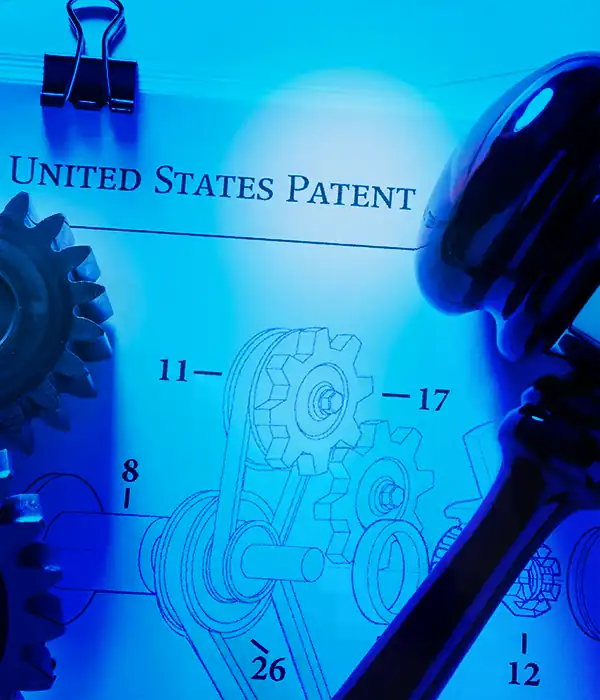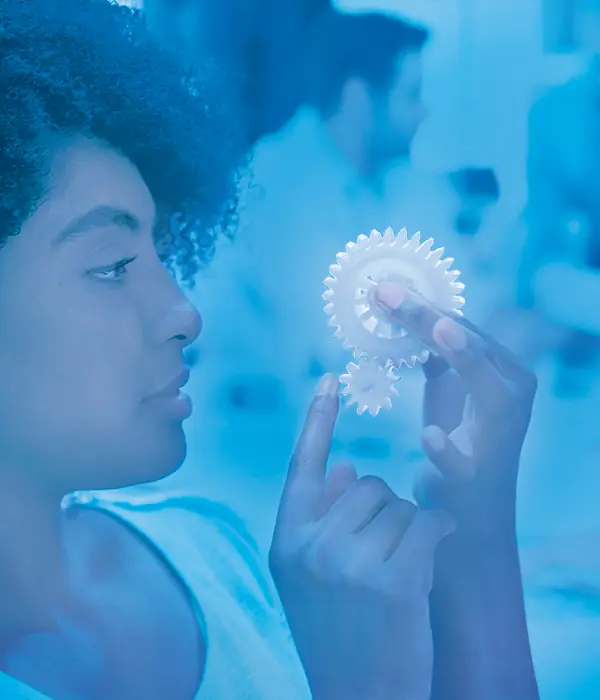
Invention Ideas
Happen Every Day…
using the form below & someone from InventHelp will be in touch.
I understand my personal information will be processed in accordance with InventHelp’s Privacy Policy. By clicking “Request Free Information” you consent to receiving SMS messages. Messages and Data rates may apply. Message frequency will vary. Reply Help to get more assistance. Reply Stop to Opt-out of Messaging.
Tips for getting started on new invention ideas, laid out step-by-step in a way that applies to many different types of inventions.
A collection of interesting facts about some of the most significant inventors and inventions in history.
Here you will find links to other websites offering information and services that may be of use to inventors. The links are grouped into various categories for convenient navigation.
According to the USPTO,
361,400 patents were granted in 2022 alone
Others aren’t waiting to do something with their invention idea, so why should you?
What to do next?
You’ve heard us ask: “Have an invention idea, but don’t know what to do next?” But what should you actually do next? We believe getting started with InventHelp can get your invention professionally prepared to be submitted to companies.
So, let’s do the next thing for your idea!
Can you really DIY?
As an inventor, can you really do it yourself? Well, of course you can, but that doesn’t mean it will be easy! InventHelp can help by giving you access to our team of writers, researchers, and animators. We can also refer you to independent patent attorneys for more affordable patent services than those sought elsewhere. So don’t waste time trying to DIY – get started with InventHelp now!
The Invention Process
Check out these tips for getting started with new invention ideas!
The Invention Process
The Invention Process
Check out these tips for getting started with new invention ideas!
What kind of product have you come up with? If that particular industry is flooded with similar ideas, either consider tweaking your idea so it fits in another industry, or add features and value to set it apart from other new products. What can your product offer that others lack? What problem does your new invention solve?
What products are hot right now? Trends are constantly changing, but if you can get a sense for what is going to be popular in upcoming months, you may be able to alter your idea to fit in or stand out among up-and-coming trends.
What do other people think of your idea? Without disclosing too much information, casually ask your trusted friends and family what they think about your invention idea. They may have ideas on alternate uses or improvements which could be made. But, be careful who you approach if you don’t have a patent, and don’t take harsh criticism to heart.
How are you going to proceed from here? Make yourself a checklist and a plan. Remember to cross off each step as it’s completed. It’s much easier to achieve your goals if you write them down. Set both short-term and long-term goals, and remember to make them measurable. How exactly will you achieve your goals? If you’re unsure, InventHelp can help you.
What does your invention idea look like? A rough sketch and a non-working prototype help when describing your idea to others. A sketch can include stick figures and traced drawings; you don’t need to be an artist. A non-working prototype can be made out of cardboard, clay, tape – any material can help make a model of your invention idea. For a more professional approach, InventHelp offers prototype modeling services, Virtual Invention Presentations, and submission brochures.
Invention Trivia
InventHelp has put together this collection of invention trivia and fun facts for you to enjoy. Most of these inventors were inventing long before InventHelp opened its doors, but we want to remember them for their hard work and creativity.
Invention Trivia
Invention Trivia
InventHelp has put together this collection of invention trivia and fun facts for you to enjoy. Most of these inventors were inventing long before InventHelp opened its doors, but we want to remember them for their hard work and creativity.
Helpful Invention Links
InventHelp® provides these invention help links for your use, enjoyment and general information. InventHelp® does not endorse any of the sites and claims no responsibility for the content, information, products or services offered by them.
Helpful Invention Links
Helpful Invention Links
Whether you are an inventor, student, journalist or business looking for invention help or information on inventing, we hope you enjoy the links provided below. The links are grouped into categories that may help you learn more about patents, inventions, the history of innovation and fun facts.
InventHelp® provides these invention help links for your use, enjoyment and general information. InventHelp® does not endorse any of the sites and claims no responsibility for the content, information, products or services offered by them.
To find out how InventHelp can provide assistance for inventors, please visit our Invention Services section and our Patent Information section.
Free Patents Online
Free patent search engine provides convenient access to millions of U.S. patents, including the full-text and images for each entry.
VentureWell
Formerly known as the National Collegiate Inventors & Innovators Alliance, they provide a variety of inventors’ help resources, publications, and programs for college-level innovators.
USPTO
The United States Patent and Trademark Office is the national authority for patent and trademark registration in the United States.
Wall Street Journal Small Business Report
From the publishers of The Wall Street Journal comes an online resource for entrepreneurs. Contains articles that may be of interest to inventors looking to start a new company.
Library of Congress
The Library of Congress is the research library that officially serves the United States Congress and is the de facto national library of the United States. It is the oldest federal cultural institution in the United States.
U.S. Small Business Administration
This site contains a lot of information about starting, financing and managing a small business of your own.
The Forum for Women Entrepreneurs
Founded in 1993, the Forum for Women Entrepreneurs (FWE) is the premier entrepreneurial service organization for women building high-growth technology and life science companies.
3M’s Century of Innovation
3M presents an interactive timeline of the inventions and new products they have brought to the market. As a companion to the timeline, the site offers a PDF of the 3M story.
The Greatest Engineering Achievements of the 20th Century
A listing from the National Academy of Sciences of some of the most significant advancements in engineering in the 20th century.
Mad Sci Network
“…a collective cranium of scientists providing answers to your questions.” Ever wonder about anything scientific? You might be able to find the answers here. Also provides links to other invention and inventor idea websites.
The Lemelson-MIT Inventor Site
This invention website is the home for all programs operated by the Lemelson-MIT Foundation.
The Patent Model Museum Online
Online collection of patent models and their history.
National Inventors Hall of Fame Online
Official site of the HoF Foundation, dedicated to “fostering the inventive spirit in all of us.”
Thomas Edison National Historic Site
Need help planning a trip to Thomas Edison’s invention laboratory? Start researching your trip here.
Inventions and Discoveries at Infoplease.com
Self-billed as having “All the Knowledge You Need,” inventors and knowledge seekers should enjoy the hundreds of stories behind famous inventions.
Transistorized!
PBS offers the invention history of the transistor from its beginnings (when J.J. Thompson discovered the electron) to predictions of its future.
Mistakes that Worked
This book, by author Charlotte Jones, chronicles a variety of everyday inventions created by mistake.
Enchanted Learning
Designed to help teachers, this site includes a large resource of invention and inventor history.
Kids Inventing! A Handbook for Young Inventors
Classroom activities designed to teach children the invention process.
Famous Black Inventors
Profiles a handful of the many African Americans who have made significant contributions to the field of inventing in the 20th century.
The Black Inventor Online Museum
Takes a look at the achievements and contributions of black inventors.
Infoplease: Black Scientists & Inventors
Provides a history of famous African American inventors and scientists from the colonial period to the present. Also includes a timeline and links to additional resources.
The Network Journal
TNJ is an online magazine for African-American professionals and small businesses.
Australian Inventions that Changed the World
Highlights some of the most significant Australian inventions and their impact on the world.
Guide to Australian Inventions & Discoveries
Outlines notable innovations that were developed and/or discovered by Australians.
Amazing Things Invented by Canadians
Highlights some of the most significant Canadian inventions and their origins.
Rachel Zimmerman and Blissymbols
In the 1980s, a 12-year old Canadian girl invented the Blissymbol printer, a device that enables individuals with cerebral palsy or other severe disabilities to communicate their thoughts easily.
InventHelp® – Invention Services
For Inventors
InventHelp® Services
What can InventHelp do for you and your invention idea? InventHelp offers services that can help inventors submit their ideas to companies. Check out some of the services InventHelp has to offer.
Why Choose InventHelp®?
We give you our track
record right up front.
true. We make no promises and do not
imply a likelihood of success.
We state our prices
up front.
We are upfront with our fees. We state our fees upfront and rely on the fees paid to perform services.
our fees upfront and rely on the fees
paid to perform services.
We will refer you to a licensed
patent attorney.
We refer clients to a licensed patent
attorney, who may then offer
legal opinions.
We present the facts
honestly.
only the marketplace can judge
the quality of an idea.
InventHelp® Sets the Standard
InventHelp®
Sets the Standard
So, you have an invention idea and don’t know what to do next. We can help! InventHelp is an invention service company that submits your idea to companies and offers patent referral services.

Over 3 Decades of Experience

The InventHelp Data Bank
InventHelp maintains a Data Bank of thousands of companies which have agreed to confidentially review our clients’ ideas. Companies joining our Data Bank are interested in looking for new inventions and represent many different types of industries. We call this the InventHelp Data Bank.

Is Your Idea Protected?
InventHelp offers patent referral services to its clients. These referrals have resulted in more than 10,000 patents for InventHelp inventors. We can refer you to an independent patent attorney who will advise you on the necessary steps to take toward potentially patenting your idea.
InventHelp®
Inventor Reviews
InventHelp®
Inventor Reviews
Real InventHelp inventors, real invention stories – how the Honest Invention Company helped them with their idea.
InventHelp®
Inventor Reviews
Real InventHelp inventors, real invention stories – how the Honest Invention Company helped them with their idea.
Russell
New York, NY
“Me and my family want to thank you from the bottom of our hearts. Thank you thank you thank you. You have no idea how much this means to us. I am a 64 yr old disabled veteran w/ 5 back surgeries and 3 knee surgeries. All I ever wanted was a chance to leave my family something of importance.”
Norbert
Austin, TX
“I am using InventHelp for the first time. The team at InventHelp has provided exceptional service for my invention. Everyone is engaged and responsive. I have chosen the full service to get from idea, to patents, to prototyping and marketing. I am very pleased with entire process and strongly recommend InventHelp to anyone who has a good idea…”
Call InventHelp! We keep your idea confidential and explain every step of our invention services.
We are InventHelp, a leading inventor service company. We provide a variety of services to help inventors and we have been in business for over 35 years.






